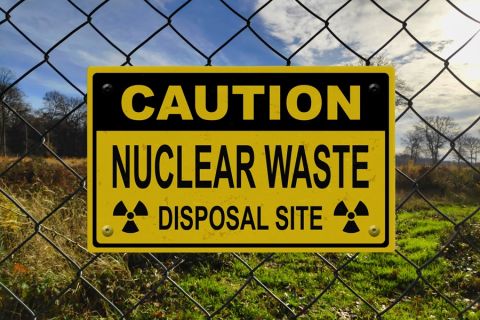Interest is growing in the prospectivity of the Chukchi Sea in the Russian Arctic as new evidence emerges to support the thesis that the under-explored region may well harbor world-class oil and gas reserves. Identification of exploratory prospects in the Russian Chukchi Sea would enhance the image of the Russian Arctic as one of the world’s most promising oil and gas frontiers.
Global oil and gas exploration companies are becoming more interested in the Russian Arctic offshore because it is one of the world’s few remaining petroleum frontiers with significant resource potential.
Meanwhile, after reevaluating available geophysical evidence and well control data in the
 |
|
| Figure 1. This map shows the location of the TGS surveys along with the ice coverage in the region. (Images courtesy of TGS-NOPEC) |
Among the newest evidence attesting to the growing prospectivity of the Russian Chukchi Sea is a proprietary, multiclient 2-D marine seismic survey acquired during the autumn of 2006 by TGS-NOPEC Geophysical Company (TGS) over the North Chukchi basin and the South Chukchi basin. Processing of one of the few modern, high-quality marine seismic surveys to be acquired in the Russian Chukchi is still under way in Moscow. But even at this early stage, subscribing companies that have viewed preliminary data say they are very encouraged by what they’ve seen.
Growing expectations
Russia’s Arctic seas are believed to hold as much as 70% of the roughly 700 million boe that is estimated to be recoverable from the Russian offshore. Arctic waters offshore eastern Russia are thought to contain more than one-third of the Russian Arctic’s recoverable offshore oil reserves and more than 10% of its recoverable gas reserves.
Perhaps just as significantly, the growing expectations for the Russian Arctic are based upon
.jpg) |
|
| Figure 2. Extreme weather conditions posed additional stress on geophysical equipment during the survey. |
At the same time, existing seismic coverage is distributed unevenly among the various offshore areas, with the vast majority of Russian Arctic seas essentially unexplored. Thus, it is important when considering the hydrocarbon potential of areas such as the Chukchi Sea to remember that the relatively low resource estimates most certainly reflect the dearth of exploration activity so far.
Clues in the US Chukchi
The results of exploratory activity in the US portion of the Chukchi Sea provide more solid evidence of the existence of commercial accumulations of oil and gas in the Arctic.
The Minerals Management Service (MMS) of the US Department of the Interior estimated in a 2006 assessment that the US Chukchi Sea Planning Area contains more than 29 trillion boe of undiscovered, technically recoverable oil and gas.
Activity in the US Chukchi planning area got under way in earnest following a series of four lease sales in the region from 1988 through 1991. Altogether, these sales are credited with generating acquisition of about 100,000 line miles (160,000 line km) of seismic data as well as comprehensive gravimetric, magnetic, thermal and geochemical surveys. Based on the geophysical evidence accumulated, a total of five exploratory wells were drilled on the Chukchi shelf from 1989 to 1991 at an average cost of US $35 million each: the Klondike, Burger, Popcorn, Crackerjack and Diamond wells.
According to a recent MMS Chukchi Sea summary, the Burger, Klondike, Popcorn and Crackerjack wells all encountered pooled hydrocarbons, although the latter three wells were considered unsuccessful because their primary geological targets lacked reservoir rocks.
When it drilled the Burger 1 exploratory well in 1989 and 1990, Shell Western Exploration encountered a significant gas show in a 107-ft (32.6-m) thick section of Cretaceous sandstone at a depth of 5,560 ft (1,696 m). The company also recovered gas and condensate samples from the strata. So even though geophysicists estimated in 1993 that the gas resource discovered by Shell Western ranged from 2 Tcf to 10.5 Tcf, with a mean estimate of 5 Tcf, the Burger discovery at first was considered to be noncommercial and was plugged and abandoned.
MMS in its recent Chukchi Sea summary estimated that the mean volume of gas resource
 |
|
| Figure 3. The Chukchi Sea is not considered a benign environment. |
Of the more than 850 drillable prospects identified by the 2006 assessment by MMS in the Chukchi planning area, 83 have structural closures exceeding 40,000 acres, and 11 exceed 150,000 acres in area. Taken together, the large number of oil and gas prospects identified in the US Chukchi and confirmation of the Burger discovery (on a large feature known as Wainwright dome on the east flank of Hanna trough, just a little more than 100 miles or 160 km from the United States-Russia international boundary) are convincing many explorationists that the Russian Chukchi Sea could be equally prospective.
Promise of another Prudhoe
The M/V Mezen seismic vessel acquired TGS’ non-exclusive multiclient survey in the Russian Chukchi Sea from mid-September through early November of 2006, during a surveying season cut short by adverse ice conditions.
Although TGS was unable to acquire all the lines of data intended, it did acquire data over the North and South Chukchi basins. More interest is arising in the North Chukchi basin because that area is believed to be a westward extension of the North Slope trend off Alaska.
Tapes containing slightly more than 2,253 line miles (3,700 line km) of raw seismic data arrived at TGS’ Moscow office for processing in early December 2006. Just a few weeks into processing, technicians reported that the initial processing runs were generating “stunning” images of deep basins, basement highs, gas chimneys, bright spots, flat spots and channel systems. Pre-subscribers to the multiclient shoot have been encouraged by the deep images being generated.
TGS plans to have final data available from the survey sometime this May. Data packages will include the final processed sections typical of data offerings on other prospective frontier oil and gas exploration regions.
Adversity in the Arctic
Throughout the Russian Chukchi survey, crewmen battled cold temperatures, which added to the normal wear and tear on the equipment. At one point, a problem communicating with streamer levelers was resolved by opening and thoroughly cleaning a number of cable section connectors. Freezing temperatures also caused blockages to occur in the tiny passages of the pneumatic system charging the air guns with compressed air; that problem was managed by injecting an antifreeze solution into the air lines.
Pack ice covered the northern part of the intended survey area all during the shoot, and the Mezen constantly had to work up to the edge of the pack,without venturing into it to avoid the risk of damaging or losing the source array or the vessel’s 19,686-ft (6,000-m) streamer.
The great distance of the survey area from sources of supply also caused considerable logistical difficulties. For example, the Mezen at one point had to interrupt shooting to travel to Dutch Harbor, Alaska, in the Aleutian Islands for refueling. The vessel’s captain had hoped to refuel at Nome, but a fuel barge had been held up by bad weather. The total distance traveled was more than 2,500 miles (4,100 km).
However prospective the Russian Chukchi Sea ultimately turns out to be, operating in the frigid Arctic environment will pose a formidable challenge to the companies seeking to drill, develop and produce the region’s oil ad gas resources. It will not be an endeavor to be taken lightly.
Recommended Reading
Laredo Oil Settles Lawsuit with A&S Minerals, Erehwon
2024-03-12 - Laredo Oil said a confidential settlement agreement resolves a title dispute with Erehwon Oil & Gas LLC and A&S Minerals Development Co. LLC regarding mineral rights in Valley County, Montana.
EQT’s Toby Rice: US NatGas is a Global ‘Decarbonizing Force’
2024-03-21 - The shale revolution has unlocked an amazing resource but it is far from reaching full potential as a lot more opportunities exist, EQT Corp. President and CEO Toby Rice said in a plenary session during CERAWeek by S&P Global.
Exclusive: The Politics, Realities and Benefits of Natural Gas
2024-04-19 - Replacing just 5% of coal-fired power plants with U.S. LNG — even at average methane and greenhouse-gas emissions intensity — could reduce energy sector emissions by 30% globally, says Chris Treanor, PAGE Coalition executive director.
BWX Technologies Awarded $45B Contract to Manage Radioactive Cleanup
2024-03-05 - The U.S. Department of Energy’s Office of Environmental Management awarded nuclear technologies company BWX Technologies Inc. a contract worth up to $45 billion for environmental management at the Hanford Site.
DOE Considers Technip, LanzaTech For $200MM ‘Breakthrough’ Technology Award
2024-03-25 - The U.S. Department of Energy funding will be used to develop technology that turns CO2 into sustainable ethylene.





